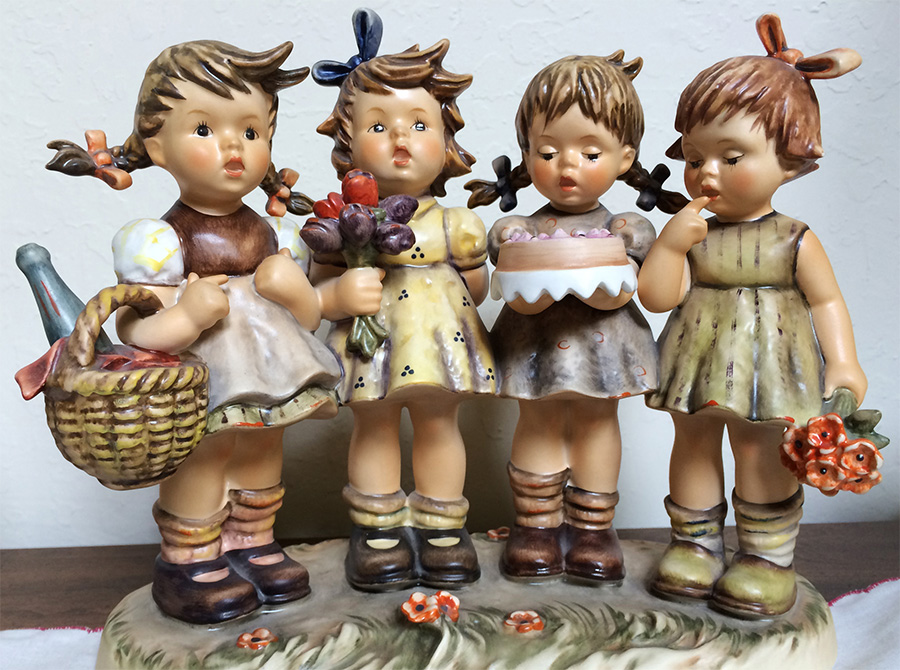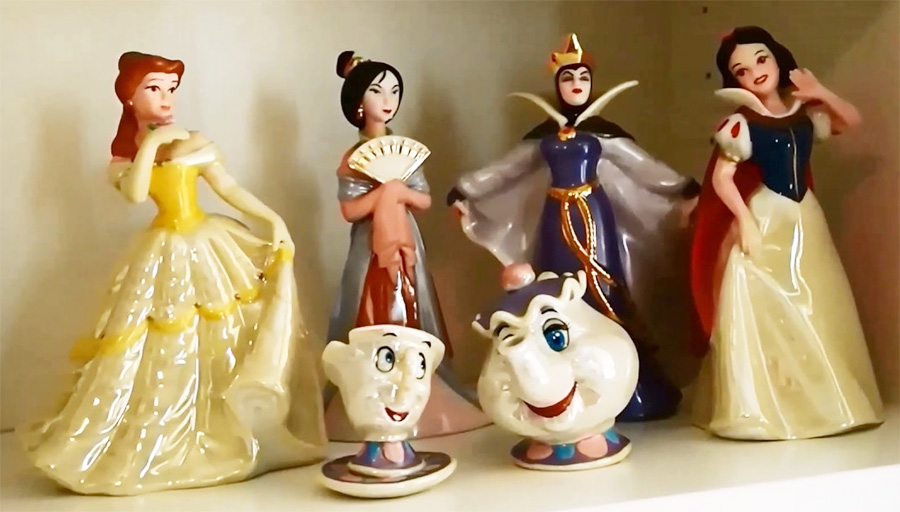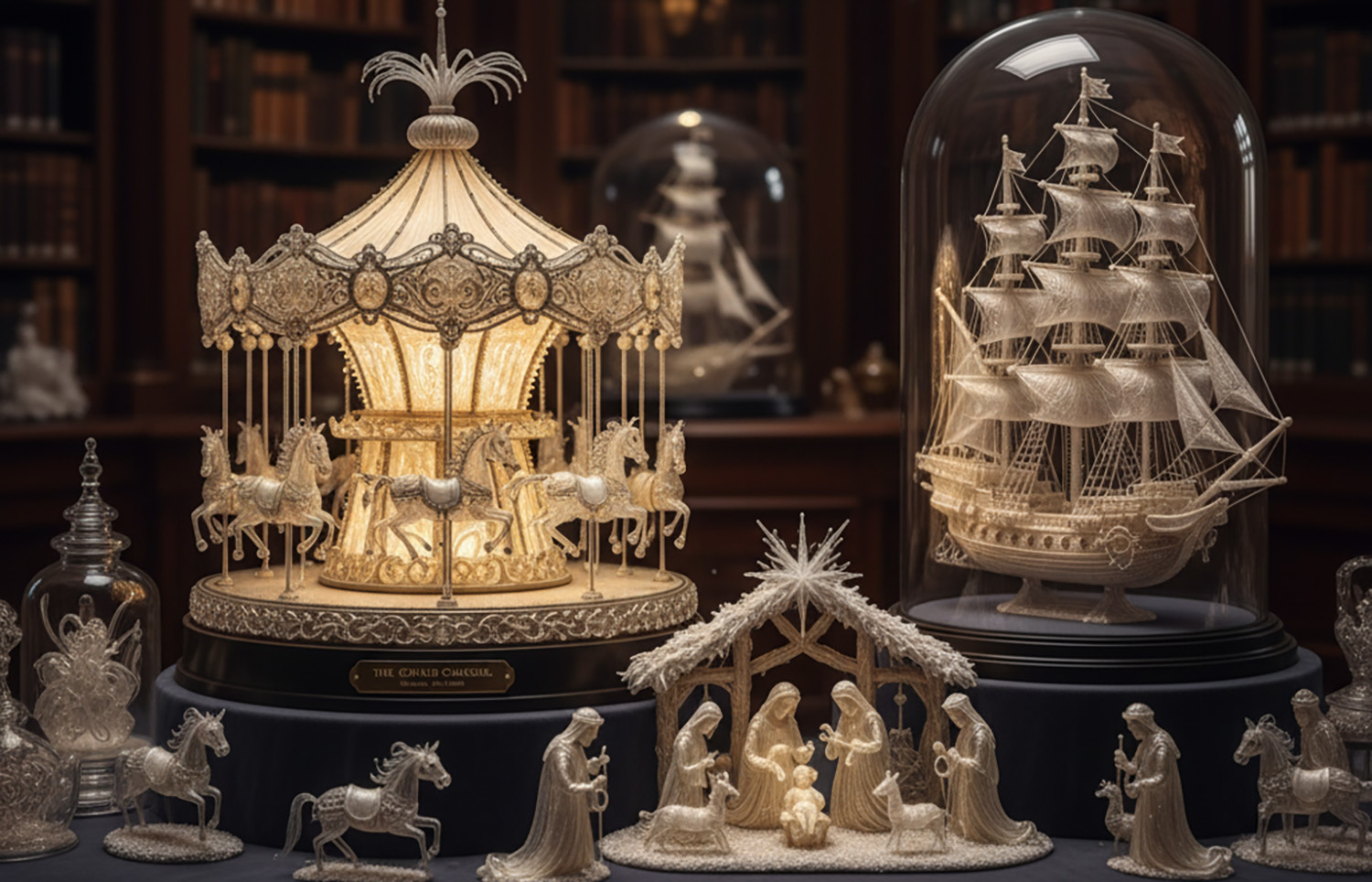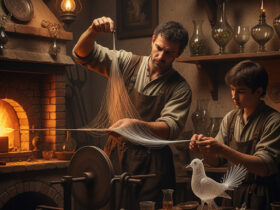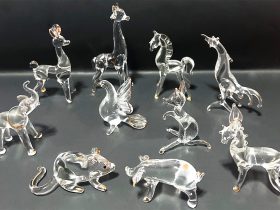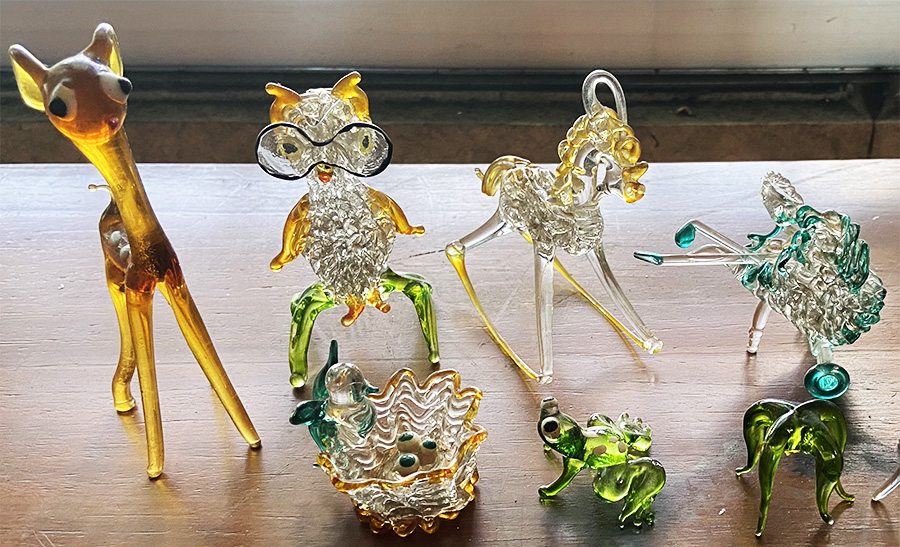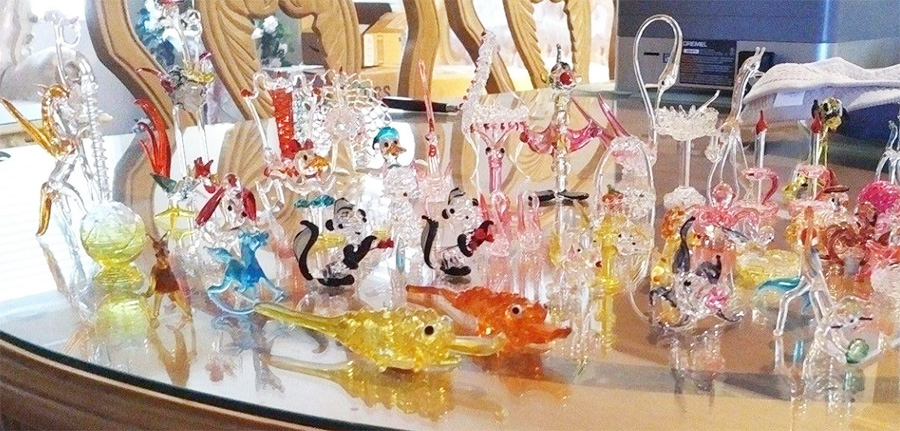For many, the world of spun glass is one of charming familiarity—a delicate swan on a mirrored base, a whimsical angel with gossamer wings, or a colorful bird perched on a delicate branch. These lovely pieces form the foundation of countless collections, offering a touch of ethereal beauty. However, beyond this accessible entry point lies a breathtaking realm of artistry and ambition, a world of masterpieces that push the very boundaries of the craft. For the advanced collector, the thrill of the hunt transcends the common and enters the extraordinary.
The search for these rare items is a journey into the heart of the artisan’s skill. What elevates a piece from a simple figurine to a coveted masterwork? It is a combination of scale, complexity, subject matter, and the sheer audacity of its creation. These are not your grandmother’s everyday trinkets; they are monumental achievements in spun glass, often commanding significant prices and representing the pinnacle of an artist’s lifelong dedication.
Let’s venture beyond the basics and explore some of the most sought-after, magnificent, and unusual spun glass collectibles that represent the holy grails for serious enthusiasts.
The Grand Scale: Dioramas of Breathtaking Complexity
One of the most awe-inspiring categories of rare spun glass art involves large-scale, multi-component dioramas. These pieces are not merely single figures but entire, self-contained worlds brought to life with countless hours of meticulous work. They represent a fusion of sculptural art, engineering, and incredible patience.
Intricate Carousels
Imagine a miniature carousel, not molded from plastic or carved from wood, but seemingly woven from moonlight and sugar. This is the magic of a spun glass carousel. These pieces are exceptionally rare due to the staggering complexity of their construction. A true masterpiece is far more than a few horses on a base; it is a symphony of interconnected, fragile parts.
The creation process is a study in precision. Each animal—be it a traditional horse, a mythical griffin, or an exotic elephant—must be individually formed with its own unique character. These figures are then attached to impossibly fine, twisted glass poles. The canopy above is a marvel in itself, often featuring delicate filigree work, tiny suspended bells, or threads of colored glass woven into patterns. The entire structure must be perfectly balanced to maintain its integrity. The finest examples might even incorporate a mirrored base to create an illusion of depth and light, or feature subtle dabs of 22k gold leaf on the animals’ saddles and bridles, adding a touch of regal splendor. Finding one of these—especially a larger, double-decker version—in pristine condition is a monumental achievement for any collector.
Full Nativity Scenes
For holiday collectors, a complete, multi-figure spun glass nativity scene is the ultimate prize. While individual angels or wise men are relatively common, a full and original set is remarkably scarce. These sets were often sold over several years or in smaller groupings, making the assembly of a complete, stylistically matched scene a decades-long quest for many.
A comprehensive set goes far beyond the Holy Family. It typically includes Mary, Joseph, and the Infant Jesus in a spun glass manger, an arching angel, shepherds with their flock of tiny sheep, the Three Wise Men bearing microscopic gifts, and essential animals like a donkey and an ox. The rarest sets are those that include a stable or crèche, itself a complex structure of spun glass beams and a delicate thatched roof.
The value lies in both completeness and condition. Over the years, a camel’s leg, a shepherd’s crook, or an angel’s wing is easily lost or broken. A collector who manages to find a complete set, especially one still housed in its original, sectioned cardboard box, has found a true treasure—a fragile snapshot of devotion and artistry that has miraculously survived the passage of time.
Masterworks of Engineering and Detail
This category of collectibles showcases the artisan’s ability to replicate complex, real-world objects with astonishing fidelity. These pieces are not just artistic interpretations; they are feats of miniature engineering, demanding a profound understanding of structure and form.
Intricate Ship Models
Among the most technically demanding of all spun glass creations are intricate ship models. A simple sailboat is a challenge, but a multi-masted galleon or a majestic clipper ship is a testament to a master’s skill. The artist must first construct the hull, a surprisingly difficult task requiring smooth, symmetrical curves. From there, the true work begins.
Delicate glass rods form the masts and bowsprit. But the rigging is where the magic happens. The artist must pull hundreds of impossibly thin, hair-like threads of glass and painstakingly fuse them in place to create the complex network of stays, shrouds, and lines. The most awe-inspiring element is often the sails. Crafted from sheets of impossibly fine spun glass, they are shaped to appear as though they are billowing in an unseen wind. The best examples will include incredible details: tiny anchors, lifeboats, flags, and even a miniature captain’s wheel, all rendered in glass. These ships are so fragile that they were often constructed inside a glass bottle by the most skilled artisans, adding another layer of wonder and rarity.
Architectural Replicas
Recreating the geometric precision of architecture in a fluid, molten medium is a challenge few glass artists dare to undertake. For this reason, spun glass architectural replicas are among the rarest and most fascinating collectibles. Subjects range from world-famous landmarks to fantastical structures.
The Eiffel Tower is a classic example, requiring the artist to build a lattice of fine glass threads that is both delicate and structurally sound. Castles, like Germany’s Neuschwanstein, are another popular but incredibly difficult subject, demanding the creation of numerous towers, turrets, and bridges. Even more complex are cathedrals, with their vaulted ceilings, flying buttresses, and intricate stained-glass windows, often suggested with tiny flecks of colored glass. These pieces are a celebration of precision, requiring the artist to build layer upon layer, fusing components with pinpoint accuracy, all while battling the forces of gravity and heat.
The Collector’s Perspective: What Defines Value and How to Protect It
For the advanced collector, identifying a rare piece is only half the battle. Understanding what drives its value and how to care for it is paramount.
Key Factors of Value:
- Complexity and Scale: Simply put, the bigger and more detailed, the better. A carousel with twelve horses is rarer and more valuable than one with four. A ship with full rigging will always command a higher price than a simple sailboat.
- Condition: This is the most critical factor. Due to their extreme fragility, these pieces are rarely found in perfect condition. Even a minor chip, a clean break, or a missing component can reduce the value by more than half. Mint condition pieces are the pinnacle of the collecting world.
- Provenance and Maker: While the vast majority of mid-century spun glass is unsigned, some pieces can be attributed to renowned glassmaking regions like Lauscha, Germany, or Murano, Italy, based on their style and technique. A piece with verifiable provenance or, rarest of all, its original packaging with a maker’s mark, sees its value increase exponentially.
- Subject Matter: Unique or universally appealing subjects tend to be more valuable. A well-known landmark or a dynamic scene like a knight fighting a dragon has a broader appeal than a simple abstract form, making it more sought-after.
The Art of Display and Preservation
Collecting these masterworks comes with the immense responsibility of preserving them. These are not items to be left on an open shelf.
- Enclosed Display: A glass dome (cloche) or a sealed curio cabinet is essential to protect from dust, which can be impossible to clean from the intricate crevices.
- Stability is Key: The display surface must be absolutely stable and free from vibrations. A passing footstep or a closing door can be enough to cause a catastrophic fracture.
- No Direct Sunlight: Sunlight can, over many years, cause clear glass to yellow and can weaken the delicate fused joints.
- Cleaning: Never use water or cloths. The only recommended method for cleaning is a gentle puff of air from a can of compressed air, held at a safe distance.
The world of rare spun glass is a testament to the limitless potential of a simple material in the hands of a master. These carousels, nativity scenes, ships, and castles are more than just collectibles; they are frozen moments of intense concentration and artistic vision. They represent a legacy of craftsmanship that is increasingly rare in our modern world.
For the collector willing to look beyond the basics, the rewards are immense. The hunt for these fragile treasures requires patience, knowledge, and a keen eye. It is a journey that leads to a deeper appreciation for the art form and the anonymous masters who spent countless hours by the flame, spinning fire and air into something timeless and beautiful. Each rare piece discovered is a victory—a delicate masterpiece saved and cherished, ready to inspire wonder for generations to come.


